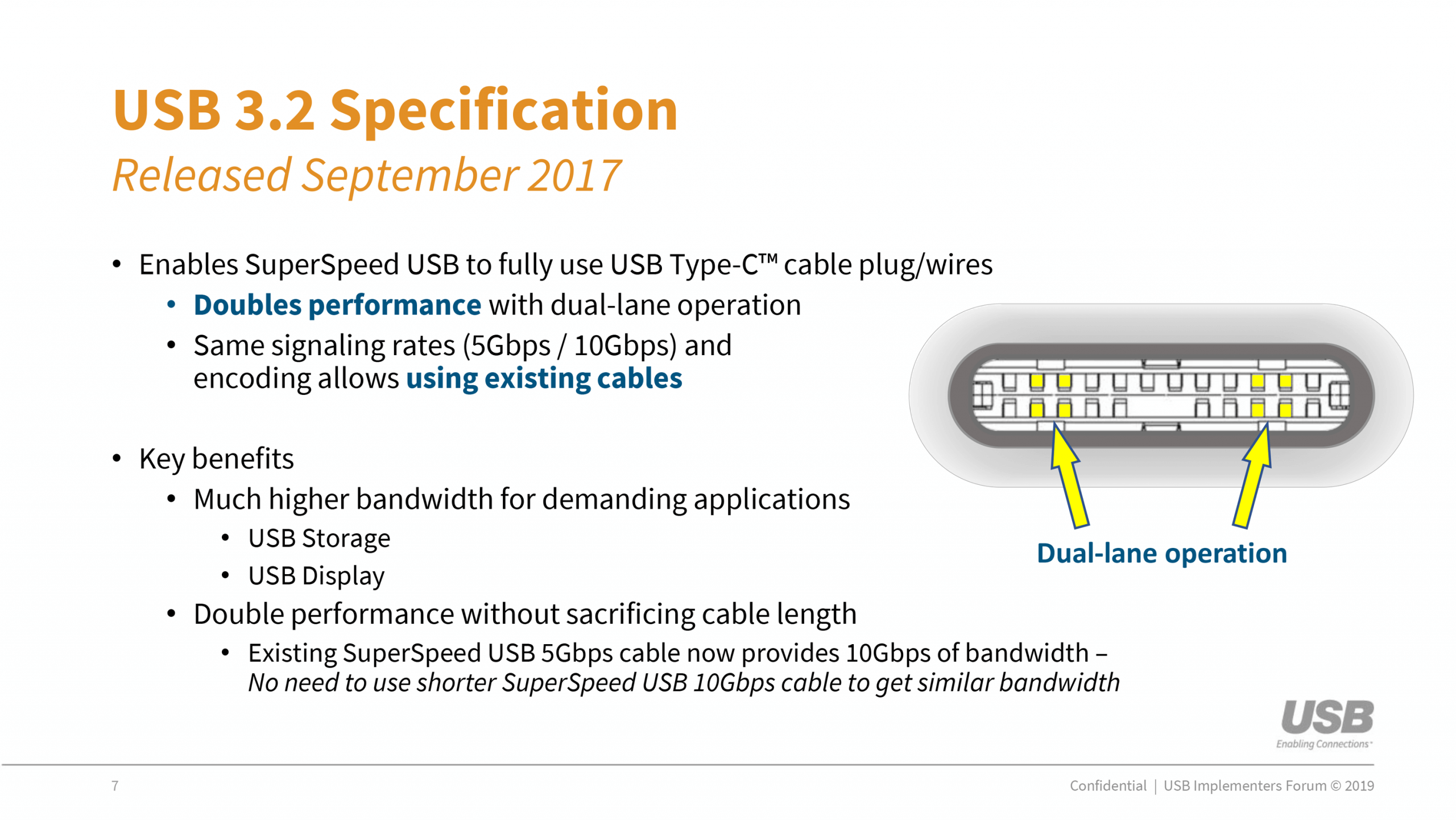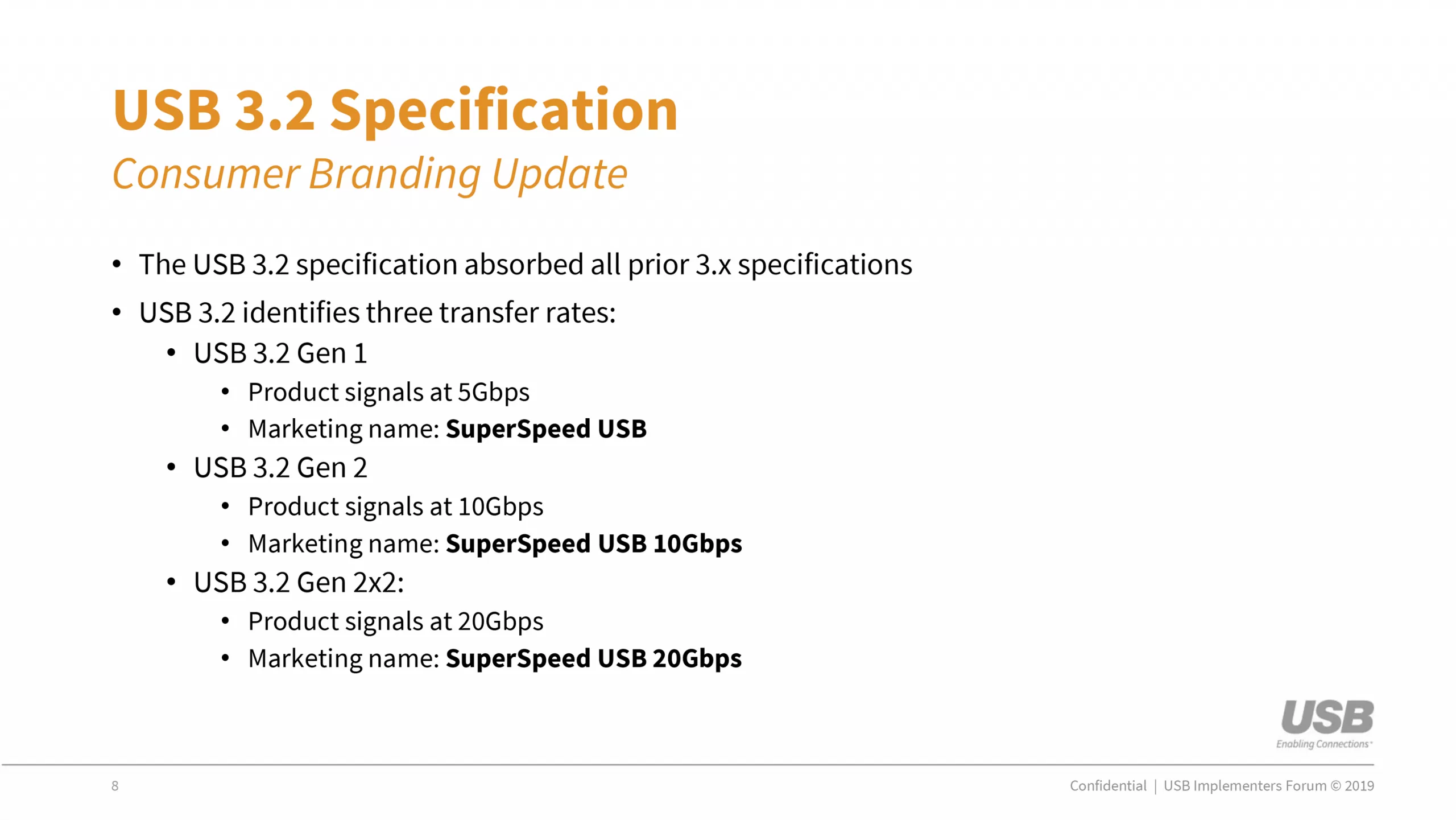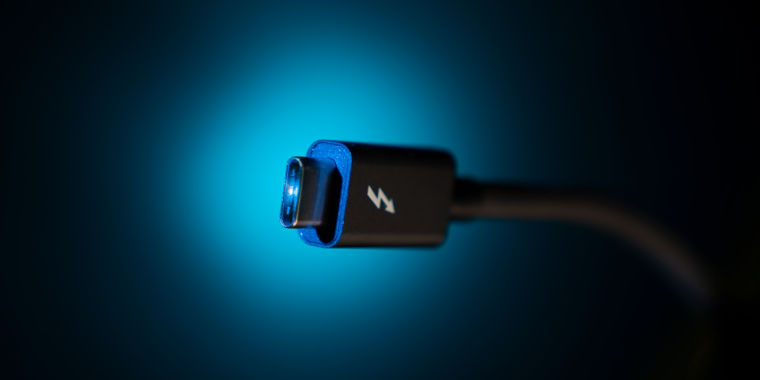- Nov 10, 2017
- 3,250
Something to look forward to: It’s fair to say that the USB standard isn’t exactly clear, but it’s about to get even more confusing. The USB Implementers Forum (USB-IF) has used Mobile World Congress to announce the new USB 3.2 format, and with it comes name changes for USB 3.0/3.1.
The first official announcement regarding USB 3.2 came back in July 2017. Now, USB-IF has revealed 3.2-capable controllers that allow 20Gbps speeds will be available later this year.
The first USB 3.2 chips are likely to arrive on high-end motherboards this summer, though we'll have to wait a bit longer for the peripherals that take advantage of this standard, with 2020 put forward as a possible date.

Additionally, USB 3.2 is set to absorb the USB 3.0/3.1 branding. So, USB 3.1 Gen 1, which has up to 5 Gbps speeds and was formerly known as USB 3.0, will become USB 3.2 Gen 1. It will have the marketing name of ‘SuperSpeed USB.’
USB 3.1 Gen 2, meanwhile, which supports 10 Gbps, becomes USB 3.2 Gen 2, aka ‘SuperSpeed USB 10 Gbps.’ Finally, the upcoming new spec will be called USB 3.2 Gen 2x2, as it uses two high-speed 10 Gbps lanes—only possible with USB Type-C. Its official name is ‘SuperSpeed USB 20Gbps.’

What this rebranding also means is that most future USB devices and ports will be called USB 3.2, making it important for manufacturers to identify their capabilities by using the marketing terms. But whether they choose to do so remains to be seen.
The first official announcement regarding USB 3.2 came back in July 2017. Now, USB-IF has revealed 3.2-capable controllers that allow 20Gbps speeds will be available later this year.
The first USB 3.2 chips are likely to arrive on high-end motherboards this summer, though we'll have to wait a bit longer for the peripherals that take advantage of this standard, with 2020 put forward as a possible date.

Additionally, USB 3.2 is set to absorb the USB 3.0/3.1 branding. So, USB 3.1 Gen 1, which has up to 5 Gbps speeds and was formerly known as USB 3.0, will become USB 3.2 Gen 1. It will have the marketing name of ‘SuperSpeed USB.’
USB 3.1 Gen 2, meanwhile, which supports 10 Gbps, becomes USB 3.2 Gen 2, aka ‘SuperSpeed USB 10 Gbps.’ Finally, the upcoming new spec will be called USB 3.2 Gen 2x2, as it uses two high-speed 10 Gbps lanes—only possible with USB Type-C. Its official name is ‘SuperSpeed USB 20Gbps.’

What this rebranding also means is that most future USB devices and ports will be called USB 3.2, making it important for manufacturers to identify their capabilities by using the marketing terms. But whether they choose to do so remains to be seen.


